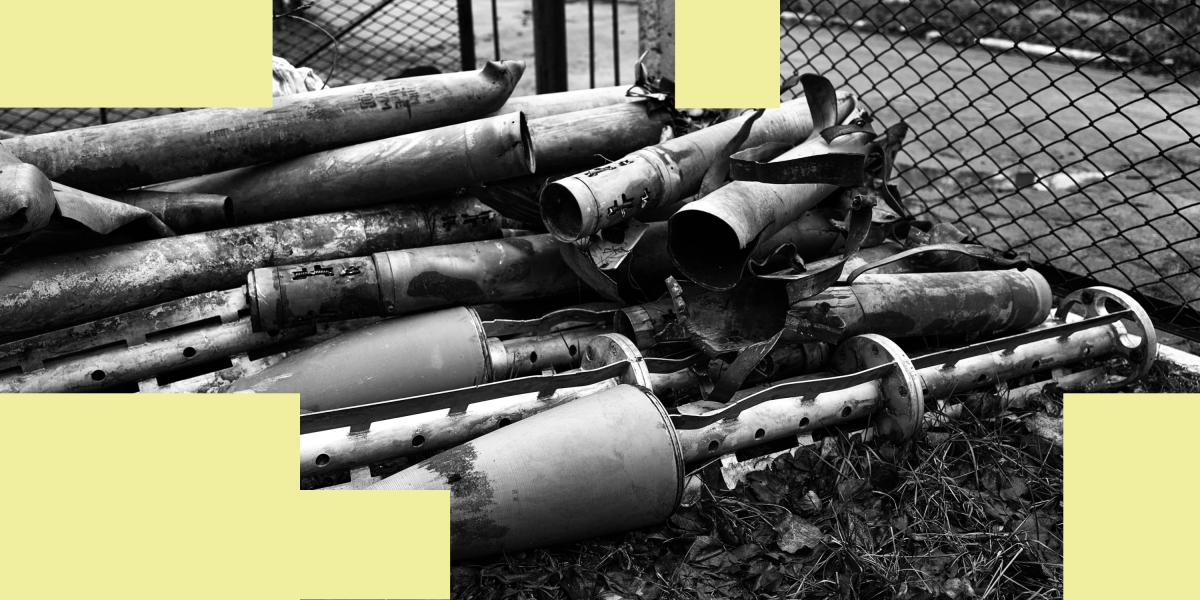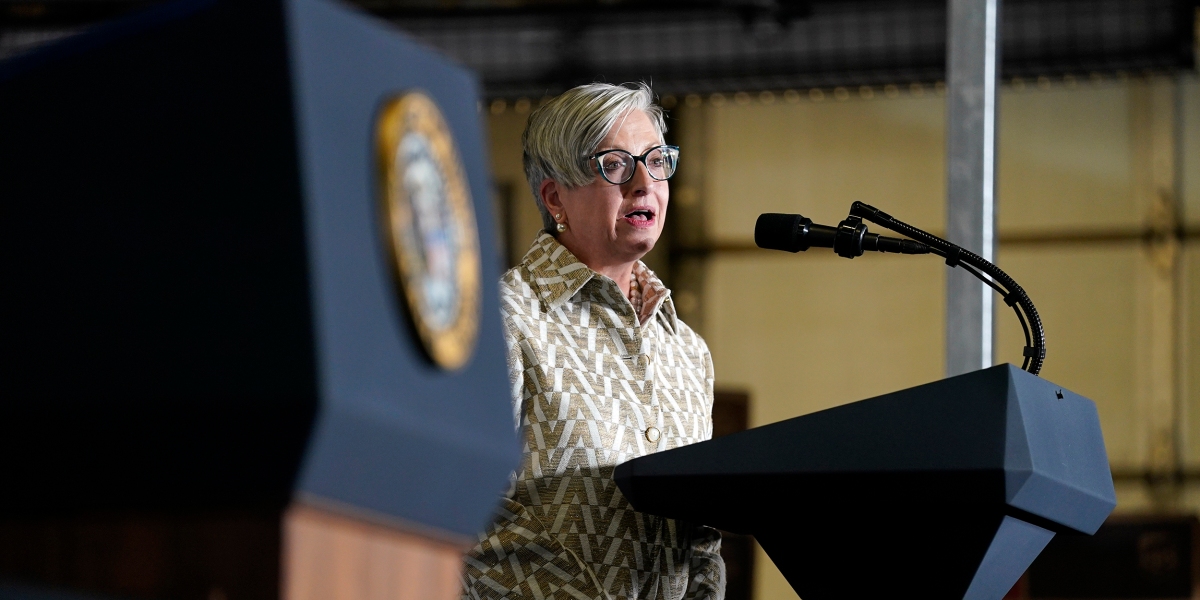Jeff Sessions’s first visit to the U.S.-Mexico border as attorney general kicked off with a ride in a Black Hawk helicopter. It began just after sunrise at the Davis-Monthan airbase outside Tucson, Arizona, and ended in Nogales, where he delivered a blistering address in which he vowed to take the “fight” to the criminal elements that have turned border communities into “war zones.” The performance was repeated a week later in El Paso, Texas. This time around, Sessions was accompanied by John Kelly, the retired Marine general turned Department of Homeland Security secretary overseeing the nation’s top immigration enforcement agencies. “This is ground zero,” Sessions said. “This is the front lines and this is where we’re making our stand.”
The display was typical of the Trump camp. From the moment he launched his campaign, Trump put a radically reimagined vision of immigration enforcement at the center of his agenda — one that emphasized a wall across the southern border and, at times, the removal of every undocumented immigrant in the country. The justification always had something to do with the tremendous, unprecedented threat emanating from the border and from immigrants. Now that Trump’s 100th day in office is nearly here, the nation has had a glimpse of the president’s response.
Like the Sessions-Kelly border tour, the Trump administration’s approach to immigration enforcement has leaned heavily on a combination of bellicose language and hard-line directives effective at driving intense fear into immigrant communities. Beyond that, advocates and former U.S. immigration officials say, the White House agenda is basically a rehashing of some of the most counterproductive policies of the Obama administration, married to a series of mind-boggling and at times hypocritical proposals that threaten to plunge the already broken immigration system into further disarray, all while undermining public safety in the very areas it seeks to improve.
“What we’ve seen from the Trump administration thus far is certainly a continuation of President Obama’s hard-edged policies regarding immigration law enforcement, accompanied by a particularly vicious form of rhetoric,” César Cuauhtémoc García Hernández, a law professor at the University of Denver, told The Intercept. “The bottom line is that there are many similarities with the Obama administration but, to be sure, President Trump and Attorney General Sessions have ratcheted up the severity of immigration law violations and are trying to further entangle the criminal justice system with the immigration law enforcement system.”

Hundreds of people attend an evening rally at Washington Square Park protesting the building of a wall along the Mexican border and policies harming immigrants and Muslims on Jan. 25, 2017, in New York.
Photo: Spencer Platt/Getty Images
Deporter in Chief
At the core of the Trump administration’s immigration platform are a series of executive orders the president signed off on during his first week in office. One of those orders resulted in the chaotic implementation of a ban on travelers coming to the U.S. from seven Muslim-majority countries. Two others, focused on domestic immigration enforcement, included sweeping implications for the nation’s 11.5 million undocumented immigrants.
In 2014, after years of bitter fighting in Washington over comprehensive immigration reform, Barack Obama announced that his administration would provide protection from deportation to hundreds of thousands of undocumented immigrants living in the country, shifting its enforcement focus to “felons, not families.” The White House, by that time, had overseen the deportation of nearly 2 million people — according to an analysis by the New York Times, two-thirds of those cases involved individuals “who had committed minor infractions, including traffic violations, or had no criminal record at all.” Obama’s DHS secretary, Jeh Johnson, operationalized the policy shift in a memo calling on his personnel to exercise prosecutorial discretion in order to prioritize enforcement of immigration laws against individuals who posed a threat to national security, border security, or public safety.
The memo did not stop the Obama administration from deporting people who lacked criminal records or whose only offense was an immigration violation — a December 2016 analysis by the Marshal Project found roughly 60 percent of the 300,000 people deported after the president’s speech fit that description — and advocates would often argue that splitting the immigrant population into two groups created its own set of problems. Still, defenders of the administration’s efforts say, it was something. At the very least, Immigration and Customs Enforcement was supposed to be targeting its efforts with an eye toward more dangerous individuals, even if the reality on the ground was much different.
Under Obama, the U.S. government focused the bulk of its immigration enforcement efforts on the southern border. Unlike its predecessors, the administration adopted a practice of putting unauthorized border crossers through formal removal proceedings, helping to fuel a rise in deportation numbers that led to Obama’s “deporter in chief” nickname. While enforcement on the border surged, however, in the interior of the country, immigrants with longstanding roots — people who had been in the U.S. several years, for example, or had citizen children — could generally expect that they would not be targeted for deportation.
Trump’s executive orders have undone all that. Including not just convicted criminals, but anyone suspected of having “committed acts that constitute a chargeable criminal offense,” immigrants with prior orders for removal, and several other categories, the administration’s view of who constitutes a priority for deportation is so broad that it makes nearly every undocumented immigrant in the country a target. Trump’s orders called for a potential expansion of expedited removal, a process that allows individuals to be swiftly deported without seeing a judge, and the creation of new immigrant detention centers along the border. The orders also mandated an enormous surge in the hiring of immigration officers and agents, and used the threat of cuts to federal funding as a means to push local law enforcement agencies into deputizing officers as de facto immigration agents.
In February, Kelly signed off on two implementation memos, drafted by a pair of former Sessions aides with no input from career DHS officials, directing his personnel on how to implement the president’s directives. In a budget proposal released the following month, the administration requested $4.5 billion for immigration-related initiatives, including an initial $2.6 billion to begin Trump’s border wall expansion and $314 million to hire 500 new Border Patrol agents and 1,000 new ICE staffers — intended as a first step in the push to 15,000 new hires for the agencies total. The funds are contingent on congressional approval and Democrats have vowed to resist the administration’s immigration agenda.
The White House also requested $1.5 billion to support the expansion of the nation’s immigrant detention system. An internal DHS report on the implementation of Trump’s executive orders, obtained by the Washington Post, revealed that ICE has so far identified 27 facilities that could house more than 21,000 additional immigrant detainees. The New York Times, meanwhile, reported that the administration is considering rolling back standards intended to ensure the well-being of detained immigrants in order to quickly fill those beds.

A U.S. Border Patrol honor guard attends a ceremony for fallen agents at the Border Security Expo on April 12, 2017, in San Antonio, Texas.
Photo: John Moore/Getty Images
Among the many U.S. immigration enforcement officials who attended this year’s 11th annual border security expo in San Antonio, Texas, the most closely watched component of Trump’s directives appeared to be his call for the hiring of 5,000 new Border Patrol agents and 10,000 new ICE agents. During a panel, Benjamin Hoffman, the Border Patrol’s chief of strategic planning and analysis, said the proposed hiring surge presented unique challenges for his agency. Border Patrol currently employs roughly 19,500 agents, Hoffman explained, but is mandated to employ more than 21,000.
“We have not hit that yet and haven’t for a while,” Hoffman said. “There’s a real concern that a lot of the 10,000 agents that ICE is going to hire will be coming from the ranks of the U.S. Border Patrol. I don’t blame them … but that makes it difficult.”
Huge post-9/11 hiring surges within the Border Patrol have fueled corruption and soaring rates of excessive force and misconduct complaints lodged against agents. Asked to increase its ranks once again, Border Patrol leadership is now considering relaxing some of its rules surrounding polygraphs for would-be agents who come from law enforcement or military backgrounds — a proposal that has raised concerns among critics, given the agency’s recent history. Senior Border Patrol officials have maintained that they will prioritize quality over quantity as they move forward in the hiring process.
In a decision that appears to reflect the administration’s prioritization of deportations, Daniel H. Ragsdale, deputy director of ICE, told attendees at the Texas expo that the vast majority of personnel hired for his agency — “about 8,500” — would be devoted to its Enforcement and Removal Operations wing, while the remaining 1,500 would be directed to ICE’s Homeland Security Investigations program, which investigates transnational criminal organizations, money laundering, and a host of other issues in addition to immigration violations.
That breakdown should raise concerns, said John Sandweg, formerly the acting director of ICE from 2013 to 2014, especially if claims by Sessions and others in the administration about a desire to tackle transnational organized crime are to be taken seriously. “They’re talking about the gangs and MS-13,” Sandweg told The Intercept. “HSI guys are federal special agents who go undercover and infiltrate the gangs, get up on wires, work with U.S. attorneys offices to bring prohibited possession charges or gun charges or whatever charges they can against them and put them in prison and/or deport them.”
“ERO, on the other hand, lacks that training, lacks the skills, and lacks the legal authorities,” Sandweg went on. “They can’t do wiretaps. They can’t bring cases for prosecution. They don’t do undercover operations. That’s not what their skill set is. So to say we’re going to plus up 85 to 15 percent on the ERO side, and then you throw this rhetoric out there about MS-13, it’s just, it’s hypocritical.”
The fate of ICE’s powerful investigative wing under the Trump administration could have important implications, Sandweg added. “Are you going to see them forcing ICE-HSI to start abandoning the criminal enforcement work and the national security work?” he asked. “HSI has the second largest number of agents on the joint terrorism task forces across the country. Are you going to see them downsize their participation on JTTFs just so they can see them upsize the number of people they’re arresting for deportation?”
During the Bush years, HSI played a key role in supporting highly controversial worksite raids targeting undocumented immigrants and their employers. The practice was rolled back under Obama, though it wasn’t ended, as HSI increasingly turned its focus to national security, organized crime, and financial crime investigations (during that time, HSI also became involved in gang investigations that have drawn their own share of criticism).
HSI has participated in a number of enforcement actions under Trump, including at worksites, though the rate of the operations has not approached that of the Bush years. Whether that will continue to be the case remains to be seen. As a senator, Sessions was a vocal critic of ICE’s turn away from worksite enforcement, suggesting the attorney general might support seeing his counterparts at DHS ramp such operations back up.
Asked during a panel at the Texas conference if his agency would be diving back into the worksite enforcement business, Peter T. Edge, HSI’s associate director, said, “We don’t conduct worksite enforcement raids and as far as worksite enforcement as an investigative area, it’s one of the areas that we enforce and we fully expect to be given clear and more concise direction on what type of worksite enforcement efforts we’ll be conducting in the future.”
Families, Not Felons
With Trump’s orders in place, attorneys around the country have reported a drop in undocumented immigrants reporting crimes and showing up to court appearances, a shift advocates have attributed to ICE agents increasing arrests at courthouses. Viral videos and stories of mothers and fathers who have spent years living in the U.S., in some cases attending regular check-ins with ICE officials, being arrested and deported have compounded an intense fear coursing through immigrant communities. Meanwhile, on the border, apprehensions have dropped to levels not seen in decades, a development the administration’s top officials have pointed to as a sign of their effectiveness in office.
Discussing the president’s orders at the Texas expo, Kate Christensen Mills, a former assistant director for congressional relations at ICE, now with the Monument Policy Group, said the public should expect to see more individuals with longstanding community ties arrested under the Trump administration. Because those individuals have spent years in the U.S., they will be more likely to fight their cases, Mills said, and as a result will spend more time locked up and fighting their deportation, all of which will cost taxpayers more money.
“If you’re going to have a decrease in people coming across the border, obviously ICE is going to have an increase in interior enforcement,” Mills explained. “Some of these people are going to have to be put in detention. Some of them are going to have ties to the community. So processing them through the Department of Justice and the immigration courts is going to take a little bit longer because they are going to have lived here for a long time.”
Natalie Asher, ICE’s acting assistant director for field operations at ERO, conceded that with her agency’s ramped-up operations in the interior, arrests of noncitizens who “have more at stake” become more likely, and that those arrests can lead to longer stays in detention. “We continue to prioritize, but the volume that’s coming at us is far larger than what we can really address on a regular basis,” Asher said.
In accordance with Trump’s executive orders, ICE is actively recruiting local law enforcement agencies to sign up for a program that deputizes officers to act as immigration officials in the investigation, detention, or apprehension of undocumented individuals. The program, known as 287(g), has long been criticized by advocacy organizations and law enforcement professionals, who argue that such agreements foster fear of local authorities in immigrant communities. ICE is pressing on with the collaborations nonetheless. In the DHS progress report obtained by the Washington Post, officials said they had identified more than 50 jurisdictions interested in applying for the program.
“By the end of this year, the hope is that we will have 63 online to sort of serve as force multipliers,” Asher said of the effort.
Asher insisted that ICE agents continue to “exercise prosecutorial discretion as we come upon individuals who may be amenable to removal proceedings and who may be amenable to detention.” In practice, Asher said, prosecutorial discretion is “like anything in old cop work. You have two seats in the car, two beds at the jail, you’ve got five individuals in front of you. You look to take the worst of the worst. That’s the same thing that we do as well.”
Whether ICE is taking the “worst of the worst” has been called into serious question. This month, the Washington Post reported that arrests of undocumented immigrants with no criminal record have more than doubled under the Trump administration. The paper described the push as “the clearest sign yet that President Trump has ditched his predecessor’s protective stance toward most of the 11 million undocumented immigrants in the United States.”
While the numbers provided important insights into ICE’s arrests thus far, some pertinent facts about the data were perhaps less than clear. Indeed, the “noncriminal” ICE arrests seen during the first three months of the Trump administration are more than double those reported over the same period in 2016 — in fact, the numbers from this year are more than those from 2016 and 2015 combined. However, the number of noncriminal arrests over the first three months of 2017 is lower than the number of noncriminal arrests during the same period in 2014. During that three-month period, which was before the Obama-era prioritization memo was issued, ICE arrested 7,483 noncriminals and 21,745 criminals, compared to 5,441 noncriminals and 15,921 criminals under Trump.
Jeanette Vizguerra hugs her youngest child, Zury Baez, 6, while addressing supporters and the media as she seeks sanctuary from Immigration and Customs Enforcement at First Unitarian Church on Feb. 15, 2017, in Denver.
Photo: Marc Piscotty/Getty Images
In other words, the Trump administration appears to be moving enforcement back to a pre-2014 prioritization memo framework, in which immigrants with clean criminal records are fair game for enforcement.
To draw deeper conclusions about of ICE’s enforcement actions so far would require more data, and experts say that has become an increasing challenge under the Trump administration. For years, the Transactional Records Access Clearinghouse at Syracuse University has used Freedom of Information Act requests and court records to provide a public accounting of ICE’s enforcement activity. In a recent report, published last week, the TRAC team reported that the filing of so-called notices to appear — the paperwork that initiates proceedings in immigration court — have shown no increase under Trump, while the number of individuals held in detention as their cases are processed has shot up significantly.
When asked if the fact that notices to appear have not gone up means that the White House is not overseeing an immigration crackdown, Susan Long, director of the TRAC program, told The Intercept that the picture is more complex. “It’s only a piece,” Long said. “The major reason it’s only a piece is because of ICE’s intransigence and lack of transparency.”
Under the Trump administration, Long explained, ICE has stopped turning over enforcement data that it released under previous administrations, including case-by-case information regarding arrests. As a result, number crunchers at her office can only provide a partial picture of immigration enforcement nationwide. Critically, Long said, ICE no longer provides information on the individuals targeted with so-called detainers, a tool ICE uses to request the arrest or detention of immigrants from local law enforcement. “That’s a key thing that they’ve started withholding,” Long explained. “We used to get the entire criminal history of each person they targeted with a detainer — so the most serious criminal convictions, when they were charged, when they were convicted, their sentence that was meted out, and any other charges in their whole history and the status of those charges.”
According to Long, ICE’s justifications for withholding the data have been “all over the map,” including claiming that past disclosures were merely voluntary and that the data in question does not exist. As a result of ICE’s position, Long argued, the public is lacking critical information needed to accurately assess Trump’s immigration enforcement practices. “They’re really central issues as to what they’re doing to enforce the law,” she said.
Sandweg, the former acting director at ICE, said that based on the information that has emerged, it appears ICE has set its sights on individuals with prior orders for removal from the country — a population that as of February included 12,370 people currently in government custody and 960,483 individuals who were not. That segment of the noncitizen population is made up “primarily of people who have very sympathetic cases, people that ICE never felt compelled to go out and find because they generally were not criminals, they had family members,” Sandweg said.
The Obama administration’s 2014 decision not to prioritize removal of these individuals, imperfect as it may have been in practice, went beyond humanitarian concerns, Sandweg explained — there are actual resource constraints on ICE that require enforcement to be targeted. “During my time at ICE, the priorities, just focusing on public safety nexus, border, convicted criminals, or people arrested for serious offenses … that population alone is more than the current ICE can handle,” Sandweg said. “It’s more than the system can handle. It’s way more than the immigration courts can handle. So it’s not like you’re being soft on enforcement or dialing back on enforcement, it’s just that you’re targeting the enforcement.”
“With the same resources and the same backlog in the immigration courts and the same number of officers, they’ve now started going after this other population, which is this noncriminal, final order population, these very sympathetic cases you read about,” he added. “When they spend their time on those cases though, it means some criminal is getting out of jail free.”
Given what he’s seen so far, Sandweg believes the Trump administration is playing a dangerous numbers game. “The way it’s being operationalized, it seems very clear to me, is that they’re trying to drive up their numbers, the numbers of total people being deported, as high as possible,” he said. “Despite the rhetoric about saying ‘we’re going to focus on criminals,’ the actions they’re taking really say they’re really focused on driving up numbers because they’re focused on this population with final orders.”

An enforcement operation conducted by U.S. Immigration and Customs Enforcement in Los Angeles on Feb. 7, 2017.
Photo: Charles Reed/U.S. Immigration and Customs Enforcement/AP
Margo Schlanger, a University of Michigan law professor who served as chief of civil rights and civil liberties at DHS from 2010 to 2011, said it will take time before the impact of the Trump administration’s enforcement practices to show up in deportation numbers. As she pointed out, the administration has yet to expand its use of expedited removal nationwide, as the president’s executive orders indicated it might. Still, she argued, a number of the administration’s efforts so far could make the nation’s already struggling immigration system even worse.
During his appearance in Arizona earlier this month, Sessions called on prosecutors across the country to increase enforcement of several crimes directly relevant to immigrant communities, including statutes surrounding the harboring of undocumented individuals and the falsification of documents. It’s an effort that has been tried before, and one that contributed directly to a build-up in immigrant detention and the massive backlog of cases in the immigration courts today — for several years now, immigration crimes have been the most frequently prosecuted offense on the federal docket.
As a fix, Sessions has vowed to streamline the hiring process for immigration judges, with an aim of filling 125 positions in the next two years. That’s easier said than done, Schlanger said.
“You can’t just on-board immigration judges,” she pointed out. And even if the administration does add more judges, she added, the quality of the cases those judges hear matters, because just as ICE’s resources are limited, so too are the DOJ’s.
“DOJ has a choice about where it’s going to spend its prosecutorial resources, and it could spend it on chump change immigration violations or it can spend it on things that actually achieve something worthwhile,” Schlanger said. If the administration falls into a habit of making “easy” arrests in order to drive up numbers — targeting people who voluntarily check in at ICE offices or show up at courts, rather than tracking down dangerous individuals — it could end up doing more damage than good, she argued.
“If you’re trying to deport the most people, you actually trade numbers against public safety,” Schlanger explained. “The more people you deport, the less public safety you buy, because you’ve got a certain amount of resources and it’s super easy to arrest law-abiding homebodies.” In other words, she said, “By doing more you accomplish less.”
“I wouldn’t say we’re there yet,” she added. “But the ship looks like it’s turning.”
Top photo: Mario Vargas, center, waits with his wife, Lola, left, and their daughter Athena in their attorney’s office before the deportation hearing of Mario in Los Angeles, California, on Feb. 9, 2017.





